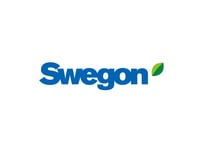As people are step by step returning to work in offices, health care premises, schools, hotels and restaurants after months of home office work or temporary leave, recent surveys show that as many as 4 out of 10 are concerned about airborne virus transmission at the workplace. So what can we do to make sure the ventilation systems are performing at their best, and alleviate concerns? Here are our top 5 tips!
1. Follow maintenance instructions
It is important that the ventilation unit is correctly set-up and well maintained and that the proper service routines are followed. Service personnel should follow the hygiene recommendations given by the authorities. Wearing protective clothing and washing hands after the work is completed is recommended.
2. Maintain a high ventilation rate
If not already running 24/7, we recommend that the ventilation is run for longer periods so that the building is well ventilated both before and after occupation. Switch ventilation on at nominal speed at least 2 hours before the building opening time and set it to lower speed 2 hours after the building usage time. At nights and weekends, do not switch ventilation off, but keep systems running at a lower speed
3. Switch air handling units with recirculation to 100% outdoor air
It is recommended to avoid central recirculation to minimize the risk for contaminated air to re-enter a building. Close the recirculation dampers either using internal controls, the Building Management System or manually.
4. Minimise internal leakage
To obtain the best indoor air quality we recommend that return air is minimised. Some important measures are required to minimise air leakage in units with rotary heat exchangers. To prevent the rotor from transporting air from the extract to the supply it is important that a purging sector is fitted. The function of the purging sector requires that the pressure difference is correct which means, firstly, the fans need to be correctly positioned so that they are both downstream of the rotor in their respective airstreams and, secondly, that the extract air is correctly throttled to create the correct pressure difference between extract and supply in accordance with our installation instructions.
5. Change the filter as usual
When the monitoring system or your maintenance plan indicates that it is time, change filters as normal. Follow good general practice when changing filters, so make sure that staff use the usual protective measures: full-coverage clothing, gloves, respirators and goggles. Put the old filter in a plastic bag and seal it.
Sources:
Swegon.com
REHVA Covid-19 guide
Eurovent General Recommendations
Survey by SIFO, June 2020, 1000 respondents in Sweden



